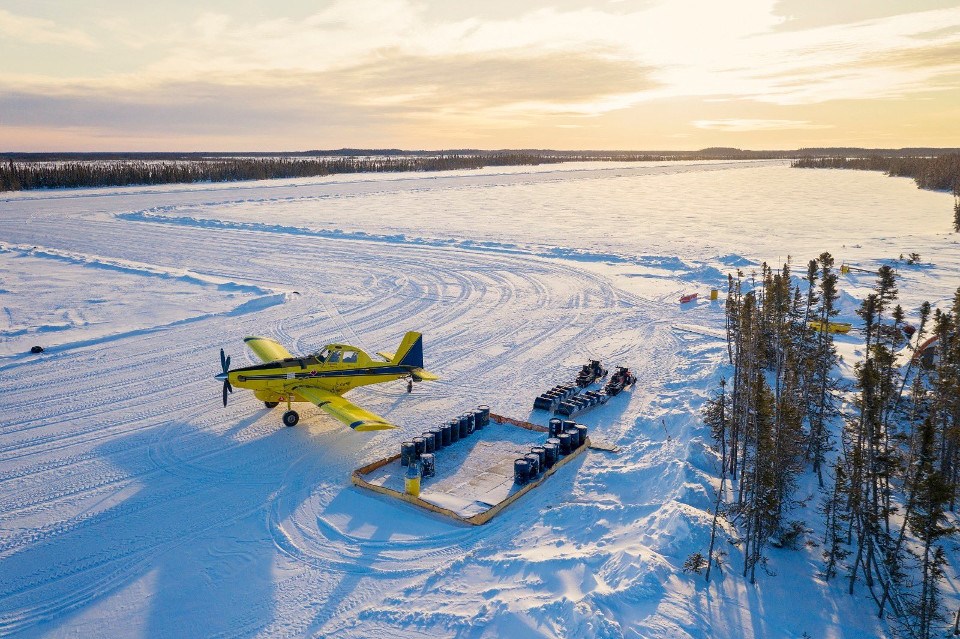The Ontario government and two First Nation communities have signed an historic agreement to start the process for the environmental assessment, planning, and construction of the second leg of the road into the Ring of Fire.
Premier Doug Ford and Greg Rickford, minister of energy, northern development and mines, and the minister of Indigenous affairs, were joined for a signing ceremony by Marten Falls Chief Bruce Achneepineskum and Webequie First Nation Chief Cornelius Wabasse at the Prospectors and Developers Association of Canada convention, March 2.
The Ring of Fire is 500 kilometres northeast of Thunder Bay in the remote James Bay lowlands, and contains a vast, rich and untapped mineral camp of world-class chromite, nickel, copper and palladium deposits.
Dubbed the Northern Road Link, the government said this partnership advances the planning of a shared community and industrial road infrastructure that will connect First Nation communities in the area of the Ring of Fire mineral belt to the Ontario highway system for the first time.
At the same time it provides the critical mine-related infrastructure to allow overland access for the mine developers and exploration companies to move supplies in and haul ore by truck out of the James Bay region.
Want to read more stories about business in the North? Subscribe to our newsletter.
"After 15 years of delay by the previous government, we said we would build a road to the Ring of Fire, and we are working with our incredible partners in the Marten Falls First Nation and Webequie First Nation to do just that and make sure we do it right," said Ford in a news release.
"Together, we can bring jobs and prosperity to communities across the Far North. Promises made, promises kept."
The proposed road will connect the proposed Marten Falls Community Access Road at the south end and to the proposed Webequie Supply Road at the north end.
"Our government is proud to partner with Marten Falls and Webequie First Nations to support the development of reliable, all-season road infrastructure and move forward with our shared goal of bringing economic prosperity to the region," said Rickford.
"Together, with First Nations partners, we are creating a clear path forward to unlock unprecedented social and economic prosperity in the Far North."
While no construction timelines or dollar values have been placed on the project, the government said the all-season road will improve the communities’ access to health and social services and allow for high-speed internet and reliable cellular service.
Last October, the province announced it was spending $30 million to deliver broadband to five Matawa tribal communities in near the Ring of Fire, namely Nibinamik, Neskantaga, Eabametoong, Marten Falls and Webequie First Nations.
Besides being the road proponents, the two First Nations will act as environmental stewards for this project. The use of traditional knowledge will guide business and environmental decisionmaking.
"We look forward to working together with Ontario to ensure the sustainable development of our ancestral territories," said Achneepineskum in a statement.
"Marten Falls First Nation takes seriously our right to make decisions for the betterment of our community. We are moving ahead with this agreement so all communities in the region can connect to the next phase, which is to secure and bring good-paying jobs in mining, construction and other skilled trades to our communities."
"Webequie First Nation supports responsible development in our territory," added Wabasse.
"We have been working together with Ontario for many years to reach this point. We believe that road development will help bring prosperity to communities across the region and better infrastructure - both on and off-reserve. We understand that road development will impact our traditional territories but believe this is a positive step forward to unlocking new opportunities that will benefit all surrounding First Nation communities."




